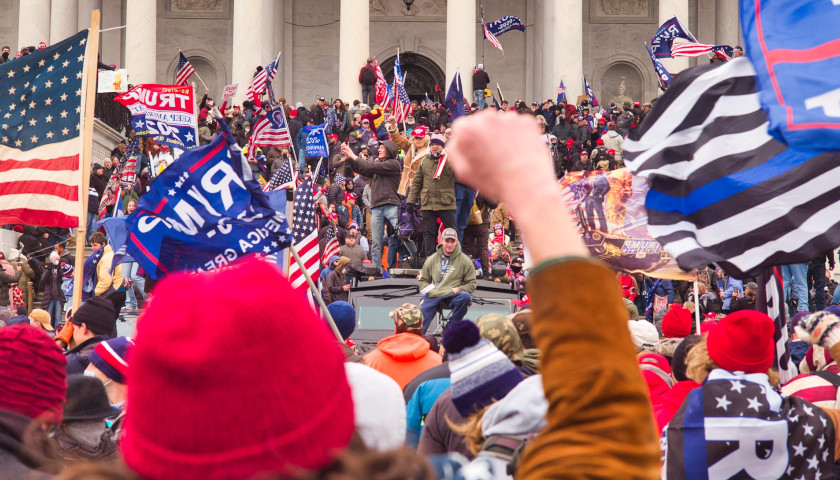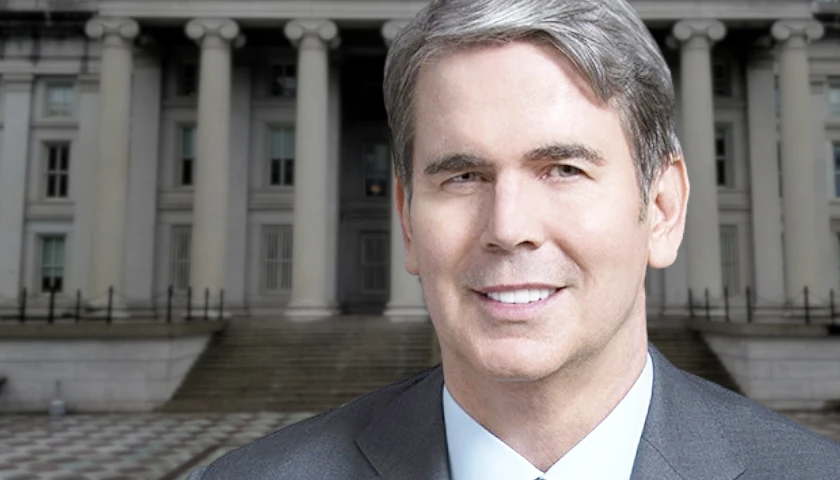by John Solomon
A day before the fateful Jan. 6 riot rocked the U.S. Capitol, security officials in the House and Senate received a warning of a possible aviation terror threat to the seat of Congress but shrugged off the concerns until congressional leadership found out from news media and began pressing for answers.
“Are you making any notification regarding the intel that I’m told is going public?” then-House Sergeant at Arms Paul Irving texted Michael Stenger, his counterpart in the Senate, about the aviation security threat early on the evening of Jan. 5, 2021, according to text messages reviewed by Just the News.
“I am under the impression that it has been deemed aspirational,” Stenger responded.
“Agree, all good,” said Irving.
The two didn’t text again for six days, according to information put out by congressional investigators. But a short while after the exchange, CBS News would report that U.S. intelligence had made the warning to the Capitol, alerting congressional leaders who then peppered the Capitol security apparatus about why they had been kept in the dark and what was being done to address the threat, the messages show.
The powerful anecdote was contained in text messages released as part of a House GOP report on Capitol security last week, adding further evidence of a laissez-faire security apparatus inside Congress that would fail spectacularly on Jan. 6 when a rowdy, pro-Trump mob, some of whom used violence to overrun police lines, invaded the building.
You can read the full report here.
Multiple investigations have determined that Capitol Police and congressional security officials had received extensive intelligence warning of violence on Jan. 6 and failed to create an adequate security plan, allowing worries from above about “optics” to take precedence over deploying National Guard ahead of the riot or better fortifying the building.
The House and Senate sergeants at arms and police chief all resigned in the aftermath of those failures, but there are concerns not enough reforms have been made to avert future security calamities inside the Capitol.
The newest report by GOP Reps. Rodney Davis, Jim Banks, Jim Jordan, Troy Nehls and Kelly Armstrong said the uninspired reaction to the aviation threat on Jan. 5 and the pre-Jan. 6 intelligence warnings exposed not only a reactive security mindset but also bureaucratic gridlock that spread security decision-making across the House and Senate sergeants at arms, the Capitol Police chief, the Capitol Architect and a supervisory Capitol Police Board.
Those layers of bureaucracy remain today, posing continued inefficiencies that threaten future security planning and responses, the lawmakers warned, noting that the board has “resisted calls for reform” on multiple occasions dating to 2001.
“The communications related to the aviation threat against the Capitol on January 5, 2021, show the ad hoc nature of the Board’s response to security events,” the lawmakers wrote in a report obtained by Just the News. “Even if the various stakeholders had attempted to proceed more deliberately, they would have been stymied by a confusing web of authorities.”
The lawmakers aren’t the first to suggest the current security decision-making apparatus inside the Capitol is overly cumbersome.
The Government Accountability Office, the independent investigative arm of Congress, warned in its February 2022 review of the Jan. 6 incident that the Capitol Police Board and police department lack “comprehensive, documented process to assess and mitigate risks,” leaving them susceptible to “overlooking potential security risks.”
Nehls (R-Texas) told Just the News that the Capitol is not as secure as it could be in part because the intelligence and security failures have not been fully aired or rectified, leaving the 1,800-plus Capitol Police officers on the job still vulnerable.
The political and security leaders in the Capitol “failed the American people, and they failed the 1,840 personnel of the Capitol Police because they had all the intelligence” warning of the Jan. 6 threat, Nehls said.
The five GOP lawmakers have proposed a significant restructuring and reform of the Capitol Police Board when Republicans take control of the House next month to improve its transparency and to make its security decision-making more crisp. Those proposed reforms include:
- compelling the Board to send meeting minutes to the relevant oversight committees;
- requiring the Board to regularly appear before the relevant oversight committees;
- providing additional resources for the Capitol Police Board to professionalize its support staff;
- clearly defining and limiting the Board’s authority over real-time decisions that police needed to make;
- making the Inspector General independent from the Board;
- changing the structure of the Capitol Police Board to add two new members to the Capitol Police Board and to replace the Chief of Police with a Commissioner.
Meanwhile, the text messages show how unnerved some members of congressional leadership were when the aviation threat became public in the news media the evening of Jan. 5, 2021 and they hadn’t been alerted to the intelligence.
About a half hour after Irving and Stenger texted at 6:20 p.m. on Jan. 5 and decided not to alert congressional leadership, CBS reported on Twitter that the FBI and FAA were investigating a security breach into air traffic control frequencies and had received a threat about flying an airplane into the Capitol on Jan. 6.
The two sergeants at arms then forwarded the CBS News tweet to others in the Capitol, according to the House GOP report.
Within minutes, a staffer for then-Senate Minority Leader Chuck Schumer’s office emailed then-Police Chief Steve Sund and the sergeants at arms, requesting guidance on how to advise Senate Leadership.
Sund responded quickly, saying that his department was investigating, along with federal partners, and they “have no information deeming this as credible.”
Shortly before 8 p.m. that day, Wyndee Parker, House Speaker Nancy Pelosi’s chief national security adviser, reached out to Irving, requesting more information on the aviation threat. Irving promised to call her back, the email and text messages show.
At 8:31p.m., a staffer in Senate Majority Leader Mitch McConnell’s office weighed in.
“I must observe there is collective concern from the Congressional leadership about learning about this threat reporting from the media rather than from USCP or SAA,” the staffer wrote. “We are also concerned that timely notification may not have been made to USCP and SAA and are making inquiries with respective federal agencies.
“Even if it is not a credible threat, we want to ensure the systems we have in place are appropriate,” the staffer added.
While the aviation terror threat never materialized, congressional leaders would get a horrifying look at just how ill-prepared the $600-million-a-year Capitol Police were when the Capitol Building was easily overrun by rowdy protesters.
As Just the News reported last week, two staffers in Pelosi’s office met and regularly corresponded with security officials crafting the Jan. 6 safety plan, at one point even helping to edit documents, while Republicans were not invited to key planning meetings.
Text and email messages from the night before the riot show that not only were National Guard troops requested by the police to reinforce security turned down, there was even concern about the optics of National Guardsmen directing traffic in the city outside the building.
For instance, a Democrat staffer from the House Appropriations Committee sent a message on Jan. 5, 2021 questioning how close National Guard troops deployed for traffic control purposes will be in relation to the Capitol complex.
“I only ask to be ahead of any members who might question a photo or live tv shot that shows National Guard with the Capitol dome in the backdrop,” the staffer wrote in one message released in the House GOP report.
Jordan (R-Ohio) told Just the News last week the involvement of Pelosi’s staff in security planning and the prioritization of optics over safety had a profound effect on the security failures that occurred on Jan. 6.
“There’s this pattern that develops where the sergeant of arms is meeting with Pelosi staff,” said Jordan, incoming chairman of the House Judiciary Committee. “Many of those meetings, Republican staff wasn’t allowed to be there. But they had this pattern where everything had to be run through her office, her staff before the sergeant of arms can make a decision.
“That’s I think the pattern that emerges, the reason there wasn’t a proper security presence on that day. It goes right to the Speaker’s staff and the Speaker’s office.”
– —
John Solomon is an award-winning investigative journalist, author and digital media entrepreneur who serves as Chief Executive Officer and Editor in Chief of Just the News.
Photo “January 6” by Brett Davis. CC BY-NC 2.0.




